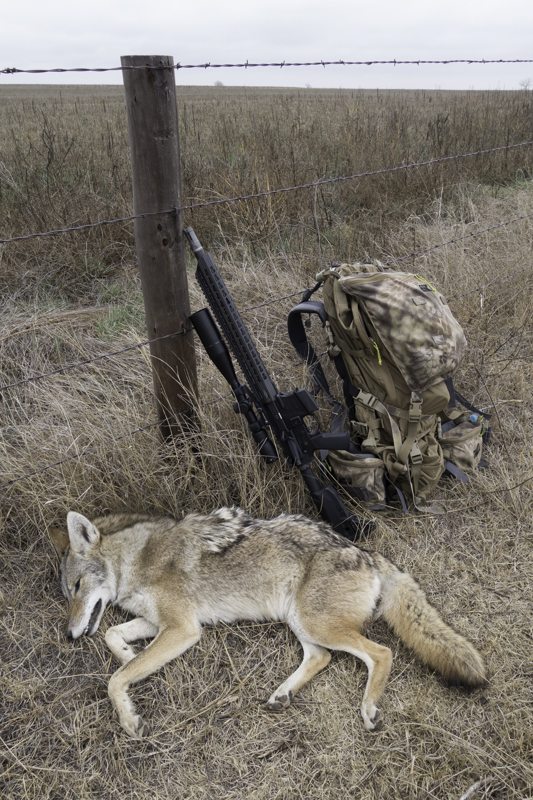
Review: Christensen Arms CA-15 VTAC
by Tony Trietch, Rokslide Moderator
Quality gear is top priority for me; I enjoy the confidence that having the best gear gives me. Everything has a cost and with it comes decisions we have to make regarding value it delivers. No matter the homes we live in, the trucks we drive, or the tools we use to make a living, choosing quality usually pays off in the end.
Firearms are no different and the Christensen Arms CA-15 VTAC most certainly falls in to the high-quality category. When Ryan Avery of Rokslide asked me if I was interested in testing out the VTAC for predator hunting, I was glad we were on the phone and not in person; the drool on my face would have been embarrassing. I was going to find out how Christensen Arms’s highly-touted tactical CA-15 was going to perform in the field while actually hunting.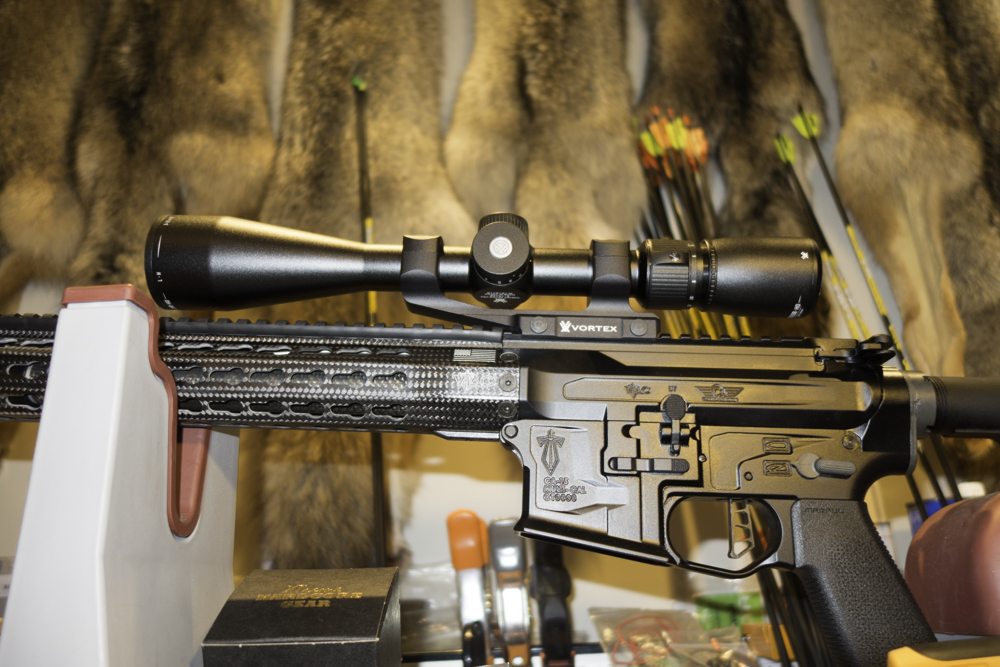
Introducing the CA-15 VTAC
The CA-15 VTAC was designed with help from Kyle Lamb at Viking Tactics. The result is an ultra-lightweight tactical firearm that is built to an AR 15 Mil-Spec platform but with the craftsmanship you’d expect from a custom firearm. It is chambered in .223 WYLDE and uses a direct impingement gas system. It features aircraft-grade 7075 aluminum billet upper and lower receivers that are matched and designed with “weight-reducing cuts” in mind. There are no die-cast or extruded parts used here. The 16″ 1:8 twist barrel is match grade and hand lapped 416R Stainless wrapped in carbon fiber and tipped with a titanium flash hider. The lower houses a match grade trigger with a skeletonized truss design that breaks @ 3.5-4.0lbs. The aero-grade carbon fiber handguard is free-floated and available with either KeyMod or M-Lok attachment systems for your accessories. An adjustable BCM Gunfighter stock finishes off the package. The VTAC is proudly made in the USA.
First impressions of the VTAC were not disappointing. The first thing that struck me was the fit and finish; it represents a very high level of craftsmanship that I personally have never seen in a tactical firearm. The action operated smoothly and the trigger felt crisp. The compact feel and light 5.6 lbs. gets your attention as soon as you pick it up. It feels solid and well balanced yet incredibly light and fast pointing. The adjustable buttstock makes getting the right fit easy for just about any length of pull you may have. The VTAC comes ready for optics and does not have open sights. The lightweight carbon barrel and handguard are as pleasing to the eye as they are functional. This isn’t your standard off-the-shelf AR.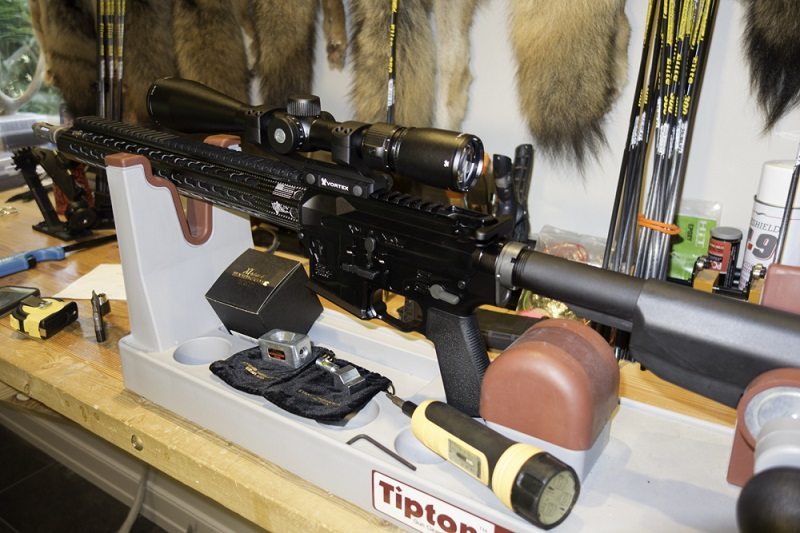
Time to Accessorize!
My plan was to turn the CA-15 VTAC into the ultimate ultra-light predator rifle. I wanted a lightweight scope with great glass. I didn’t want adjustable ballistic turrets but rather a reticle that offered MOA-based hash marks for fast holdover. I found what I was looking for in the Vortex Optics Razor HD LH 3-15×42 with the HSR-4 reticle. Weighing in at only 16.5oz, it was a perfect match for what I wanted, (you can read a complete review on the new Razor HD LH 3-15×42 in Jared Bloomgren’s review here). A Vortex one-piece cantilever mount finished my build. 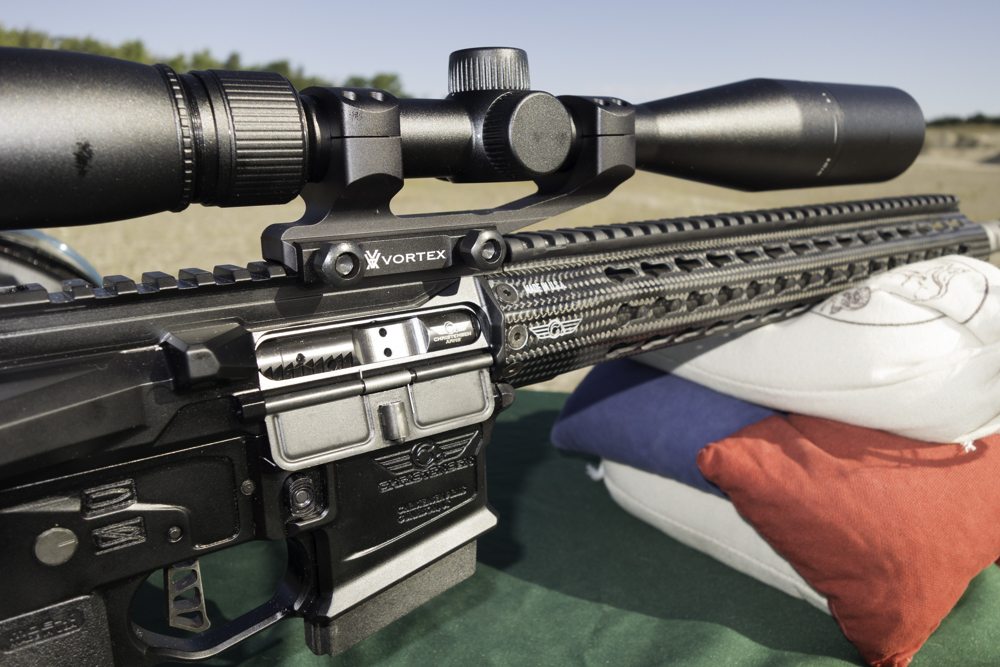 I found the sun shade on the Vortex a valuable tool when shooting on sunny days
I found the sun shade on the Vortex a valuable tool when shooting on sunny days
Range Day
Rings lapped and scope torqued down, I was ready for the bench and a range day. I had picked up several different boxes of ammo to try—some high-end rounds and some more economically priced, but all were loaded with hunting projectiles. For the break-in period that Christensen Arms suggests, I loaded up the most inexpensive ammo I had: Hornady 55 grain HPs. I fully expected to use these only for the break-in period then move to the higher grade ammo for sight-in and ultimately hunting use.
With the VTAC solidly nestled in sandbags on the bench and pointed at my target 100 yards down range, it was time for the break-in. With a 16″ barrel and only weighing in at 6.7lbs with optics, this isn’t what you’d call a long-range set up. As expected, being so light, it’s not the most comfortable on a bench. I was expecting accuracy to suffer due to this.
The first shot was left 6″ and 2″ low. Two more shots without adjustment and I was certain that both missed the 3′ x 3′ target! I was a bit disappointed and figured I better move the target to 50 yards. Once at the target it became very clear that the second and third shot didn’t miss, but that all three rounds were in a small group I could have covered with a dime. My disappointment turned to excitement as I walked back to the bench. A few adjustments to the Vortex and I was dead on at 100 yards.
This is when the Vortex’s HSR-4 reticle proved to be a great match for the .223. The first and second large MOA hash marks proved to be perfect for hold over at 200 and 300 yards! The VTAC was grouping better than any small caliber firearm I had ever fired, consistently grouping ½” MOA from the bench. It didn’t seem to matter what type of hunting round I fired, they all grouped amazingly well and I had no misfires or jambs. The confidence you have in the field with a gun that hits exactly where you point it is a powerful thing. I was leaving for my first hunt in less than a week and the VTAC was ready.
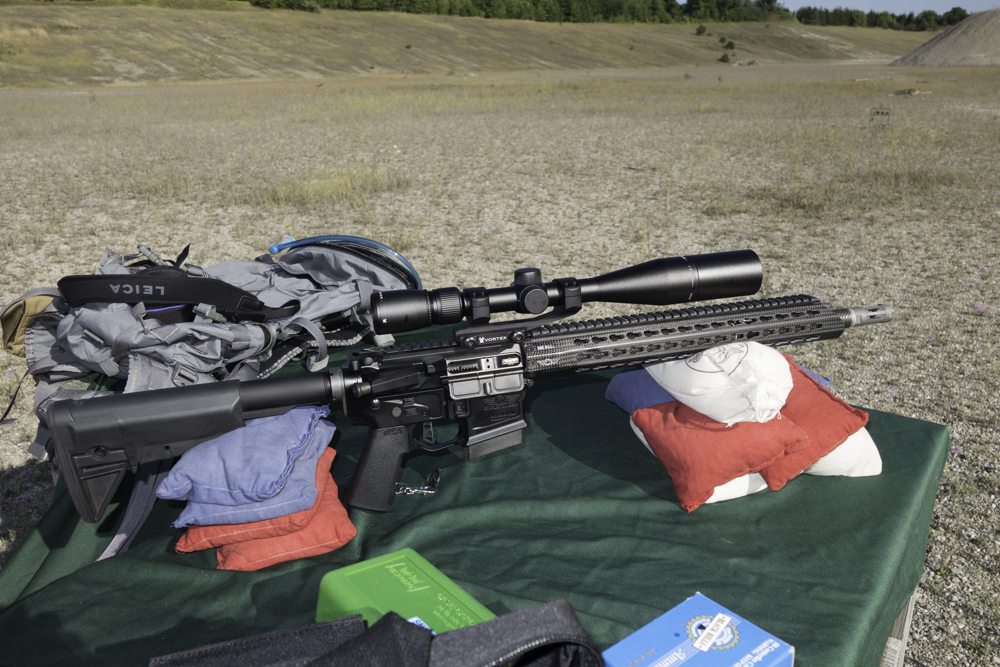
There Will Be Fur
The very first set up I had was in rolling sage area with small dry river breaks on a foggy morning. As soon as it was daylight I let the Foxpro rip. Visibility was no more than 150 yards and I was tucked under a rocky washout. A minute hadn’t gone by and I heard claws on rocks coming hard from behind me. I had just enough time to look up and see a coyote’s underside as he launched over the washout and me in route to the Foxpro. I will never forget the sounds he was making as he jumped over me at less than five feet—he was growling and snapping his teeth even in midair! It happened so fast and so close to me that it startled me a bit but not as much as the 55 grain pill startled him as he stood over the call. The first blood for the Christensen Arms VTAC was one I won’t soon forget.
For the next two months, I was on the road and hunted deer and elk from Arizona to Wyoming and finally in Montana and Kansas. Every chance I had after filling big-game tags was spent chasing fur.
The VTAC was the only rifle I took for predators and I never felt like I was missing anything. The design by Christensen Arms and Kyle Lamb turned out to be a very accurate tactical gun that is also highly functional in the field. I can’t think of anything I didn’t like about the VTAC. The combination of craftsmanship, accuracy, and functionality are very impressive. The short barrel and lightweight proved to be assets in the field. The CA-15 VTAC never missed a step and I won’t hesitate to recommend the gun to anyone.
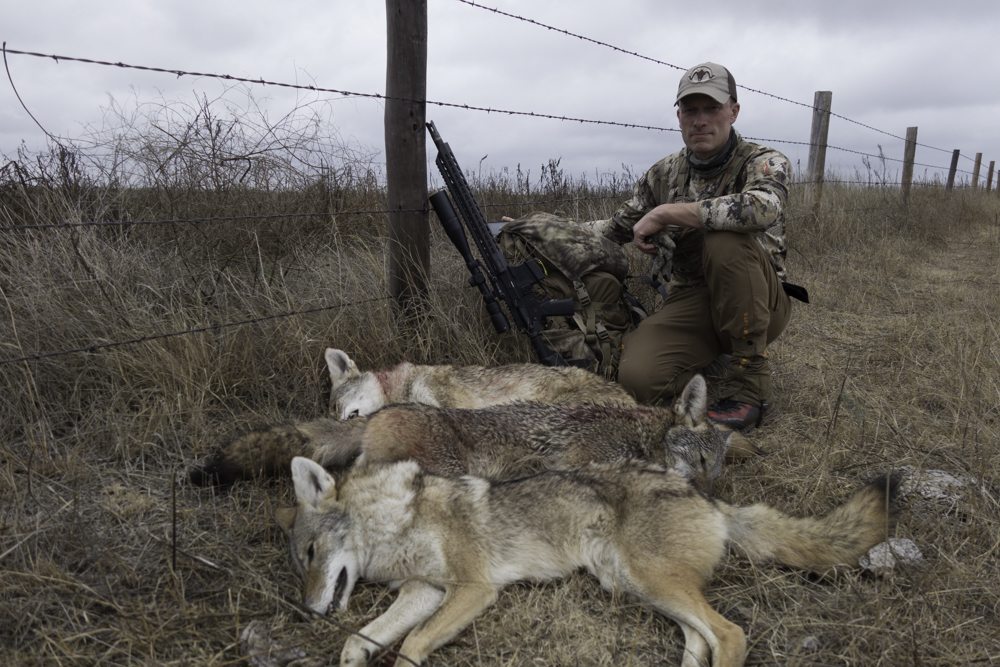
You can ask Tony questions or discuss this article here



















